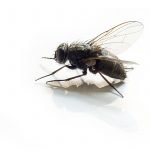Herbal Sexual Tonics for Men: Help or Hype?
Botanical Insights
Jillian Stansbury, ND
Health food stores often have an entire section of products dedicated to enhancing the libido, improving erectile function, and boosting low testosterone, sometimes located right next to the pills that help you gain muscle mass and “burn” fat. Low testosterone levels are frequently demonstrated with modern lab testing, especially in the elder decades of a man’s life, and many symptoms – including low libido, loss of muscle mass, poor stamina, and infertility – have been treated with herbal medicines since ancient times. Many such herbs are now being shown to support healthy testosterone levels, including the well-known Panax ginseng of Asian traditional medicine and Lepidium (maca) root in the traditional medical system of the Andean peoples.
This review will briefly summarize the research on these classic reproductive tonics, as well as review the evidence supporting the ability of Epimedium, Eurycoma, and Tribulus to boost low testosterone levels. In practice, the herbs which improve circulation, such as maca and small amounts of yohimbe, might be used for those with erectile dysfunction due to vascular weakness. Those herbs that boost DHEA and androgens, such as Epimedium, Eurycoma, and Tribulus, might be combined with the classic adaptogens and used for men with erectile dysfunction that presents along with loss of muscle mass and general vitality.
Popular Herbs
Ginseng
Panax ginseng (ginseng) is one of the best-known sexual and reproductive herbs, used for centuries as an anti-aging and longevity tonic; the roots are purported to help maintain sexual function into old age. Panax, which is widely used by herbalists as an adrenal tonic, may also improve low sperm counts and low testosterone levels in men. Animal and clinical investigations suggest regular use of Panax ginseng can enhance spermatogenesis, support fertility, enhance libido, and increase erectile function.1 The herb may also improve sperm survival rate, motility and quality.1 In rats, Panax ginseng has been shown to protect testicular Leydig cells from suppression by dexamethasone (a synthetic glucocorticoid), thereby protecting or restoring diminished testosterone synthesis.2
The ginsenosides, which are steroid-like compounds, are credited with traditional adaptogenic activity and are shown to bind glucocorticoid receptors. These compounds may also promote endothelial nitric oxide production in the vasculature.1 In animal models of metabolic syndrome, Panax has been shown to improve erectile function related to enhanced circulatory and metabolic parameters, including ameliorating dysfunction of the cavernous nerves of the penis and endothelial cells, smooth muscle fibrosis, reduced nitric oxide production, and reduced cyclic guanosine monophosphate (cGMP).3 Ginseng also promotes the release of luteinizing hormone from the pituitary, which in turn may help boost serum testosterone.1 Panax is considered a warming herb, since it can sometime cause heat symptoms in the body; it is therefore most indicated for those with cold or neutral constitutions. Panax is specifically indicated for exhaustion and endocrine imbalances that follow long-term overwork and stress.4
Maca
Lepidium meyenii (maca) is a small turnip-like tuber in the crucifer family, which grows exclusively at high elevations in the Andes. The tuber has been cultivated since Incan times, and is dried and eaten as a food staple in the Andean diet in areas where few other vegetables thrive at such an extreme altitude. Maca powder has an agreeable flavor and is easy to stir into oatmeal, applesauce, or used in smoothies. Traditionally, dried maca tubers are cooked in soups or are ground into a flour and used in a variety of baked goods; the herb is believed to improve energy and stamina, fertility, heart function, mood, and longevity.
In menopausal women, maca consumption has been found to offset libido impairments induced by antidepressant medications.5 Although maca has a reputation for stimulating the libido, the plant has not been shown to activate androgen receptors or increase androgen levels, and, in fact, may block them.6 Thus, any erectile-supportive actions of maca may be due to circulatory enhancement rather than testosterone-boosting effects.
Lepidium tinctures are available and can also be included in formulas for male and female infertility and to support general reproductive health. Early herb texts claimed Lepidium to be specific for breast pain when the pain was squeezing or lancinating in quality; these texts also reported maca as helpful for menorrhagia. Maca’s antioxidant and anti-inflammatory properties, as well as circulatory effects via nitric oxide production, make it a promising cardiovascular agent.7-10 The herb has also been shown to increase sperm count and motility.11
Being a crucifer, maca roots and commercial maca products (eg, powders, tinctures, encapsulations) contain glucosinolates that may help optimize metabolism of hormones and protect hormone-sensitive tissues from carcinogens. Glucosinolates liberate sulforaphane upon heating, which may be more prominent when consuming cooked maca tubers, as in the traditional diet of the Andean people, and absent in tinctures or simple dried powders. Fatty acids and macamides are additional constituents that are credited with anti-inflammatory effects.12
Yohimbe
Pausinystalia yohimbe (yohimbe) is an African tree species whose bark is traditionally used to treat erectile dysfunction. Modern research has shown the alkaloid, yohimbine, to promote penile vasodilation via alpha-2 adrenergic blockade.13 Yohimbe was referred to as “herbal Viagra” following the FDA’s approval of yohimbine as the first plant-derived drug for treating erectile dysfunction in the late 1980s. Yohimbine and related alkaloids also inhibit monoamine oxidase,14 which causes serotonin and epinephrine to increase in the brain.
The adrenergic activity of yohimbine can result in many side effects, including nervousness, anxiety, insomnia, headaches, panic attacks, increased frequency of urination, and possibly hypertension.15 However, small amounts combined with more nourishing herbs may improve erectile function by enhancing penile circulation. The herb is also reported to enhance sexual sensation and improve orgasmic function by increasing adrenergic signaling in pelvic ganglia.16 The simultaneous use of phosphodiesterase inhibitors may increase the efficacy of yohimbine for erectile function, but can also promote side effects such as changes in visual perception, rhabdomyolysis, dyspepsia, headache, or back pain.17 Due to potential toxicity, yohimbe should be avoided by individuals with advanced circulatory disease (eg, diabetes or metabolic syndrome), to avoid inappropriate adrenergic blockade.
Damiana
Turnera diffusa aphrodisiaca (damiana) is a shrub that is native to the United States. Turnera has a folkloric reputation for enhancing libido, thus earning the species name aphrodisiaca. Although the aphrodisiac claims may be exaggerated and with sparse corroborating scientific research, the plant has been shown in aging rats to increase sexual activity.18 Turnera has been traditionally used to treat menstrual and pregnancy disorders, incontinence in the elderly, fatigue, and anxiety. Turnera is in the Passifloraceae family – a family noted for its calming, relaxing, and GABAergic activity. Anxiolytic effects have been demonstrated in modern research.19 In keeping with folkloric tradition, Turnera may improve sexual function and libido when suppressed by stress and anxiety, and help improve the mood in cases of nervous debility.
Turnera has not been widely studied, but anti-cancer effects in breast cancer have been reported, and the herb is credited for general anti-inflammatory action combined with estrogenic, yet aromatase-inhibiting, actions.20
Tribulus
Tribulus terrestris (puncture vine) was used in ancient India and the Middle East, where it was said to boost the libido in both sexes; in the humorist school of medicine in Iran it was said to affect all 4 humors, thereby addressing all possible underlying causes of low libido and sexual dysfunction. Tribulus has been used in many traditional healing systems for low libido, sexual debility, erectile dysfunction, premature ejaculation, low sperm count, prostatitis, male and female infertility, as well as for other medical complaints, such as diabetes, kidney stones, and heart disease. Both the fruits and roots of Tribulus are used medicinally, with many effects credited to steroidal saponins including spirostanol and furostanol, as well as anti-inflammatory flavonoids.
While popular claims regarding the herb’s power to enhance sexual function may be exaggerated and sensationalized, Tribulus has been shown to improve erectile function via circulatory enhancement and to increase libido in postmenopausal women.21 The saponin in Tribulus, protodioscin – also found in Dioscorea (wild yam) – may support testosterone production,22 possibly via conversion into DHEA upon ingestion,23 in both men and women. One study found Tribulus to support DHEA levels in women, which was associated with increased sexual satisfaction, and to promote penile circulation and libido in male animals.24 However, the research has been mixed. Although some studies have shown the ingestion of protodioscin and other steroidal saponins to increase testosterone in men but not in women, other studies have shown no significant effects of the herb on testosterone levels in either gender. The aphrodisiac effect of Tribulus may thus be more attributable to endothelial effects, such as that of nitric oxide, than to androgenic effects.25 Animal studies suggest that Tribulus may support the maturation of ovarian follicles.26 Its specific actions in the ovary may make it useful in PCOS, reducing inappropriate folliculogenesis and the tendency to form ovarian cysts.27
Horny Goatweed
Epimedium grandiflorum, koreanum, brevicornu (horny goatweed) are some of hundreds of species of Epimedium; many are referred to as horny goatweed in the West. Epimedium brevicornu is a commonly used species that goes by the common name yin yang huo in Traditional Chinese Medicine, where it has been used to treat infertility, erectile dysfunction, and low libido. Many Epimedium species also have a long history of use in the treatment of estrogen deficiency-related diseases such as osteoporosis,28,29 as well as to support sexual function and fertility in both sexes.30
Modern research shows Epimedium to support spermatogenesis when suppressed by hormonal imbalance or oxidative stress in the testes.31 The herb contains the isoprenylated flavonoid glycosides, icariin and epimedin, which have been shown to inhibit bone resorption and improve erectile function in animal models of aging.32 Icaritin, the aglycone of icariin, has estrogenic properties and stimulates estrogen-driven cells,32 and may promote estrogen biosynthesis in human ovarian cells.33
Icariin and related flavonoids may also have significant anti-inflammatory and immunoprotective effects. Even though these compounds appear to be estrogenic, the flavonoids may induce apoptosis in cancer cells, including drug-resistant cancers.34 One study reported Epimedium to increase the sensitivity of breast cancer cells to radiation therapy,35 and another study showed purified icaritin to have antiproliferative effects in endometrial cancer, due to estrogen receptor modulation.36 The flavonol, icariin, has also been shown in rats to promote nitric oxide synthesis,37 which may enhance penile circulation and erectile function due to vascular effects.
Tongkat Ali
Eurycoma longifolia (tongkat ali, also known as Long Jack) is regarded as an aphrodisiac and energy tonic in Southeast Asia; it is also a major export of Malaysia, including beverages that combine the decoction with coffee, canned drinks, and various medicinal preparations. The common name “tongkat” means the “stick of a man,” referring to an erect penis, and “ali” means aphrodisiac. The plant itself is a large shrub; it is the roots that are used traditionally as an anti-aging and sexual tonic.
Root decoctions yield various quassinoids (including eurycolactone, eurycomalactone, eurycomanol, eurycomanone, and eurycomaoside) and triterpenes, all of which contribute to Eurycoma’s ability to improve strength and stamina.38 Animal studies suggest that these and other compounds in Eurycoma may promote testosterone production and sperm parameters via androgenic effects.39 Other animal studies show Eurycoma root extracts to promote steroid synthesis, possibly via enhancement of ATP production and cell membrane signaling cascades in gonadal cells. Eurycoma longifolia tincture has been shown in animals to increase erectile function and sexual activity.7 Human studies suggest that Eurycoma can increase semen volume and sperm motility and morphology, as well as pregnancy rates in female partners.40
Androgen promotion by Eurycoma may also reduce bone resorption,41 thus help in the treatment of osteoporosis related to androgen deficiency. Even though the herb promotes androgenic effects in human males, it does not appear to cause prostatic hypertrophy; in fact, anti-cancer and anti-inflammatory effects in the prostate have been reported.42 Furthermore, while Eurycoma has been found to increase testosterone levels in aged or hypogonadal men, use of the herb by endurance athletes was not shown to alter the urinary testosterone:estrogen ratio.43 It is thus not considered to be a doping agent and is presently not prohibited by athletic associations.
Summary
In summary, the research on these plants supports their traditional usage for hormonal production, circulatory enhancement, and maintaining sexual function into one’s elder years. However, the marketing of such herbs may make them out to be tools that may yield rapid or sensational improvements in libido, stamina, and erectile function, which are sensationalized claims. Like adaptogens that can tone the hormonal regulatory pathways gently, over months and years, the herbal medicines discussed in this article can be agents to prevent hormonal decline, reduce oxidative stress in the vasculature, and support endocrine function when used long-term.
References:
- Leung KW, Wong AS. Ginseng and male reproductive function. Spermatogenesis. 2013;3(3):e26391.
- Wanderley MI, Saraiva KL, César Vieira JS, et al. Foetal exposure to Panax ginseng extract reverts the effects of prenatal dexamethasone in the synthesis of testosterone by Leydig cells of the adult rat. Int J Exp Pathol. 2013;94(3):230-240.
- Kim SD, Kim YJ, Huh JS, et al. Improvement of erectile function by Korean red ginseng (Panax ginseng) in a male rat model of metabolic syndrome. Asian J Androl. 2013;15(3):395-399.
- Lee S, Rhee DK. Effects of ginseng on stress-related depression, anxiety, and the hypothalamic-pituitary-adrenal axis. J Ginseng Res. 2017;41(4):589-594.
- Dording CM, Schettler PJ, Dalton ED, et al. A double-blind placebo-controlled trial of maca root as treatment for antidepressant-induced sexual dysfunction in women. Evid Based Complement Alternat Med. 2015;2015:949036.
- Chauhan NS, Sharma V, Dixit VK, Thakur M. A review on plants used for improvement of sexual performance and virility. Biomed Res Int. 2014;2014:868062.
- Sandoval M, Okuhama NN, Angeles FM, et al. Antioxidant activity of the cruciferous vegetable Maca (Lepidium meyenii). Food Chem. 2002;79(2):207-213.
- Kasprzak D, Jodlowska-Jedrych B, Borowska K, Wojtowicz A. Lepidium meyenii (Maca) – multidirectional health effects – review. Curr Issues Pharm Med Sci. 2018;31(3):107-112.
- Li S, Hao L, Kang Q, et al. Purification, characterization and biological activities of a polysaccharide from Lepidium meyenii leaves. Int J Biol Macromol. 2017;103:1302-1310.
- Naseem KM. The role of nitric oxide in cardiovascular diseases. Mol Aspects Med. 2005;26(1-2):33-65.
- Gonzales GF, Cordova A, Gonzales C, et al. Lepidium meyenii (Maca) improved semen parameters in adult men. Asian J Androl. 2001;3(4):301-313.
- Almukadi H, Wu H, Böhlke M, et al. The macamide N-3-methoxybenzyl-linoleamide is a time-dependent fatty acid amide hydrolase (FAAH) inhibitor. Mol Neurobiol. 2013;48(2):333-339.
- Morales A. Yohimbine in erectile dysfunction: the facts. Int J Impot Res. 2000;12 Suppl 1:S70-S74. Available at: https://tinyurl.com/ycxh8czo. Accessed December 10, 2018.
- Nutrition Review. Yohimbe. October 10, 2013. Available at: https://nutritionreview.org/2013/10/yohimbe/. Accessed December 10, 2018.
- Cunha JP, ed. Yohimbe. Reviewed on September 5, 2017. RxList. Available at: https://www.rxlist.com/consumer_yohimbe/drugs-condition.htm. Accessed December 10, 2018.
- Alwaal A, Breyer BN, Lue TF. Normal male sexual function: emphasis on orgasm and ejaculation. Fertil Steril. 2015;104(5):1051-1060.
- Pellegrinia M, Rotolo MC, Busardò FP, et al. Non-allowed Pharmacologically Active Substances in Physical and Sexual Performance Enhancing Products. Curr Neuropharmacol. 2017;15(5):724-730.
- Arletti R, Benelli A, Cavazzuti E, et al. Stimulating property of Turnera diffusa and Pfaffia paniculata extracts on the sexual-behavior of male rats. Psychopharmacology (Berl). 1999;143(1):15-19.
- Kumar S, Madaan R, Sharma A. Estimation of Apigenin, an Anxiolytic Constituent, in Turnera aphrodisiaca. Indian J Pharm Sci. 2008;70(6):847-851.
- Avelino-Flores Mdel C, Cruz-López Mdel C, Jiménez-Montejo FE, Reyes-Leyva J. Cytotoxic activity of the methanolic extract of Turnera diffusa Willd on breast cancer cells. J Med Food. 2015;18(3):299-305.
- Akhtari E, Raisi F, Keshavarz M, et al. Tribulus terrestris for treatment of sexual dysfunction in women: randomized double-blind placebo – controlled study. Daru. 2014;22:40.
- Zhu W, Du Y, Meng H, et al. A review of traditional pharmacological uses, phytochemistry, and pharmacological activities of Tribulus terrestris. Chem Cent J. 2017;11(1):60.
- Adimoelja A, Siauw AF. Phyto-androgenic androgens in men’s health, sex and aging FX. Transl Androl Urol. 2014;3(S1):AB69.
- Park SW, Lee CH, Shin DH, et al. Effect of SA1, a herbal formulation, on sexual behavior and penile erection. Biol Pharm Bull. 2006;29(7):1383-1386.
- Neychev V, Mitev V. Pro-sexual and androgen enhancing effects of Tribulus terrestris L.: Fact or Fiction. J Ethnopharmacol. 2016;179:345-355.
- Abadjieva D, Kistanova E. Tribulus terrestris Alters the Expression of Growth Differentiation Factor 9 and Bone Morphogenetic Protein 15 in Rabbit Ovaries of Mothers and F1 Female Offspring. PLoS One. 2016;11(2):e0150400.
- Wei LN, Fang C, Huang R, et al. Change and significance of growth differentiation factor 9 and bone morphogenetic protein expression during oocyte maturation in polycystic ovary syndrome patients with ovarian stimulation. Zhonghua Fu Chan Ke Za Zhi. 2012;47(11):818-822.
- Wong SP, Shen P, Lee L, et al. Pharmacokinetics of prenylflavonoids and correlations with the dynamics of estrogen action in sera following ingestion of a standardized Epimedium extract. J Pharm Biomed Anal. 2009;50(2):216-223.
- Zhao J, Ohba S, Komiyama Y, et al. Icariin: a potential osteoinductive compound for bone tissue engineering. Tissue Eng Part A. 2010;16(1):233-243.
- Horny Goat Weed. Available at: https://www.webmd.com/vitamins/ai/ingredientmono-699/horny-goat-weed. Accessed December 10, 2018.
- Park HJ, Koo YK, Park MJ, et al. Restoration of Spermatogenesis Using a New Combined Herbal Formula of Epimedium koreanum Nakai and Angelica gigas Nakai in an Luteinizing Hormone-Releasing Hormone Agonist-Induced Rat Model of Male Infertility. World J Mens Health. 2017;35(3):170-177.
- Xue L, Wang Y, Jiang Y, et al. Comparative effects of er-xian decoction, epimedium herbs, and icariin with estrogen on bone and reproductive tissue in ovariectomized rats. Evid Based Complement Alternat Med. 2012;2012:241416.
- Li F, Du BW, Lu DF, et al. Flavonoid glycosides isolated from Epimedium brevicornum and their estrogen biosynthesis-promoting effects. Sci Rep. 2017;7(1):7760.
- Tan HL, Chan KG, Pusparajah P, et al. Anti-Cancer Properties of the Naturally Occurring Aphrodisiacs: Icariin and Its Derivatives. Front Pharmacol. 2016;7:191.
- Hong J, Zhang Z, Lv W, et al. Icaritin synergistically enhances the radiosensitivity of 4T1 breast cancer cells. PLoS One. 2013;8(8):e71347.
- Tong JS, Zhang QH, Huang X, et al. Icaritin causes sustained ERK1/2 activation and induces apoptosis in human endometrial cancer cells. PLoS One. 2011;6(3):e16781.
- Xin ZC, Kim EK, Lin CS, et al. Effects of icariin on cGMP-specific PDE5 and cAMP-specific PDE4 activities. Asian J Androl. 2003;5(1):15-18.
- Khanijo T, Jiraungkoorskul W. Review Ergogenic Effect of Long Jack, Eurycoma Longifolia. Pharmacogn Rev. 2016;10(20):139-142.
- Wahab NA, Mokhtar NM, Halim WN, Das S. The effect of eurycoma longifolia Jack on spermatogenesis in estrogen-treated rats. Clinics (Sao Paulo). 2010;65(1):93-98.
- Tambi MI, Imran MK. Eurycoma longifolia Jack in managing idiopathic male infertility. Asian J Androl. 2010;12(3):376-380.
- Shuid AN, El-arabi E, Effendy NM, et al. Eurycoma longifolia upregulates osteoprotegerin gene expression in androgen- deficient osteoporosis rat model. BMC Complement Altern Med. 2012;12:152.
- Tong KL, Chan KL, AbuBakar S, et al. The in vitro and in vivo anti-cancer activities of a standardized quassinoids composition from Eurycoma longifolia on LNCaP human prostate cancer cells. PLoS One. 2015;10(3):e0121752.
- Chen CK, Mohamad WM, Ooi FK, et al. Supplementation of Eurycoma longifolia Jack Extract for 6 Weeks Does Not Affect Urinary Testosterone: Epitestosterone Ratio, Liver and Renal Functions in Male Recreational Athletes. Int J Prev Med. 2014;5(6):728-733.
 Jillian Stansbury, ND, has practiced in SW Washington for nearly 20 years, specializing in women’s health, mental health, and chronic disease. She holds undergraduate degrees in medical illustration and medical assisting, and graduated with honors in both programs. Dr Stansbury also chaired the botanical medicine program at NCNM and has taught the core botanical curricula for more than 20 years. She also writes and serves as a medical editor for numerous professional journals and lay publications, and teaches natural products chemistry and herbal medicine around the country. She is presently working to set up a humanitarian service organization in Peru and is studying South American ethnobotany.
Jillian Stansbury, ND, has practiced in SW Washington for nearly 20 years, specializing in women’s health, mental health, and chronic disease. She holds undergraduate degrees in medical illustration and medical assisting, and graduated with honors in both programs. Dr Stansbury also chaired the botanical medicine program at NCNM and has taught the core botanical curricula for more than 20 years. She also writes and serves as a medical editor for numerous professional journals and lay publications, and teaches natural products chemistry and herbal medicine around the country. She is presently working to set up a humanitarian service organization in Peru and is studying South American ethnobotany.










